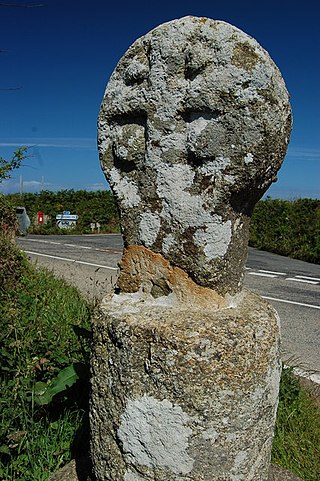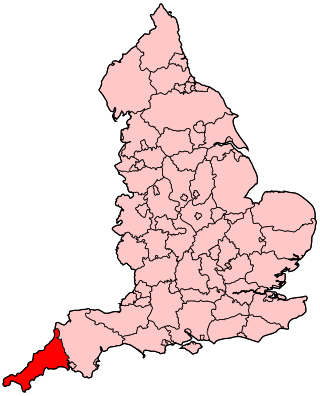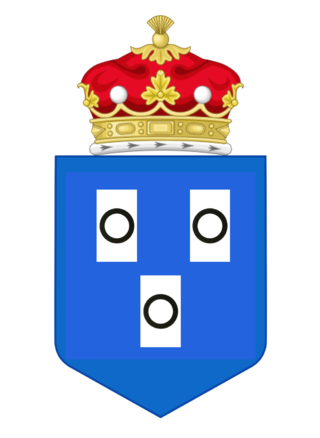
Jacobitism was a political movement that supported the restoration of the senior line of the House of Stuart to the British throne. The name derives from the first name of James II of England, which is rendered in Latin as Jacobus. When James went into exile after the November 1688 Glorious Revolution, the Parliament of England argued that he had abandoned the English throne, which they offered to his Protestant daughter Mary II of England, and her husband William III. In April, the Scottish Convention held that he "forfeited" the throne of Scotland by his actions, listed in the Articles of Grievances.

James Francis Edward Stuart, nicknamed the Old Pretender by Whigs, was the son of King James VII and II of England, Scotland and Ireland, and his second wife, Mary of Modena. He was Prince of Wales from July 1688 until, just months after his birth, his Catholic father was deposed and exiled in the Glorious Revolution of 1688. James II's Protestant elder daughter Mary II and her husband William III became co-monarchs. The Bill of Rights 1689 and Act of Settlement 1701 excluded Catholics such as James from the English and British thrones.
The Tories were a loosely organised political faction and later a political party, in the Parliaments of England, Scotland, Ireland, Great Britain and the United Kingdom. They first emerged during the 1679 Exclusion Crisis, when they opposed Whig efforts to exclude James, Duke of York from the succession on the grounds of his Catholicism. Despite their fervent opposition to state-sponsored Catholicism, Tories opposed exclusion in the belief inheritance based on birth was the foundation of a stable society.

The Prayer Book Rebellion or Western Rising was a popular revolt in Cornwall and Devon in 1549. In that year, the first Book of Common Prayer, presenting the theology of the English Reformation, was introduced. The change was widely unpopular, particularly in areas where firm Catholic religious loyalty still existed, such as Lancashire. Along with poor economic conditions, the enforcement of the English language led to an explosion of anger in Cornwall and Devon, initiating an uprising. In response, Edward Seymour, 1st Duke of Somerset sent John Russell to suppress the revolt, with the rebels being defeated and its leaders executed two months after the beginning of hostilities.

Michael Joseph, better known as Michael An Gof, was one of the leaders of the Cornish rebellion of 1497, along with Thomas Flamank.

The Cornish rebellion of 1497, also known as the First Cornish rebellion, was a popular uprising in the Kingdom of England, which began in Cornwall and culminated with the Battle of Deptford Bridge near London on 17 June 1497.

St Columb Major is a town and civil parish in Cornwall, England, United Kingdom. Often referred to locally as St Columb, it is approximately seven miles (11 km) southwest of Wadebridge and six miles (10 km) east of Newquay The designation Major distinguishes it from the nearby settlement and parish of St Columb Minor on the coast. An electoral ward simply named St Columb exists with a population at the 2011 census of 5,050. The town is named after the 6th-century AD Saint Columba of Cornwall, also known as Columb.

The Jacobite succession is the line through which Jacobites believed that the crowns of England, Scotland, and Ireland should have descended, applying primogeniture, since the deposition of James II and VII in 1688 and his death in 1701. It is in opposition to the legal line of succession to the British throne since that time.

Henry Jenner was a British scholar of the Celtic languages, a Cornish cultural activist, and the chief originator of the Cornish language revival.

Humphrey Arundell of Helland in Cornwall, was the leader of Cornish forces in the Prayer Book Rebellion early in the reign of King Edward VI. He was executed at Tyburn, London after the rebellion had been defeated.
James Paynter was the leader of a Jacobite uprising in Cornwall in the 18th century.

Boskenna is an early medieval settlement and large 17th-century manor house in the civil parish of St Buryan, west Cornwall, England, United Kingdom. Nearby, to the south, is the valley and cove of St Loy and the site of St Loy's chapel which was on the Boskenna side of a stream.
This timeline summarizes significant events in the History of Cornwall
The Second Cornish uprising occurred in September 1497 when the pretender to the throne Perkin Warbeck landed at Whitesand Bay, near Land's End, on 7 September with just 120 men in two ships.

In the spring and summer of 1715 a series of riots occurred in England in which High Church mobs attacked over forty Dissenting meeting-houses. The rioters also protested against the first Hanoverian king of Britain, George I and his new Whig government. The riots occurred on symbolic days: 28 May was George I's birthday, 29 May was the anniversary of Charles II's Restoration and 10 June was the birthday of the Jacobite Pretender, James Francis Edward Stuart.

The following outline is provided as an overview of and topical guide to Cornwall: Cornwall – ceremonial county and unitary authority area of England within the United Kingdom. Cornwall is a peninsula bordered to the north and west by the Celtic Sea, to the south by the English Channel, and to the east by the county of Devon, over the River Tamar. Cornwall is also a royal duchy of the United Kingdom. It has an estimated population of half a million and it has its own distinctive history and culture.
The following is a timeline of the history of St Columb Major, Cornwall, England, United Kingdom.

The Marquess of Trelissick is a title in the Jacobite Peerage of England. It was the only non-subsidiary title at the rank of Marquess in the English Jacobite Peerage, before becoming a subsidiary of the Duke of Tyrconnell. It was awarded to James Paynter, a leading Jacobite, who played a prominent role in the Jacobite uprising in Cornwall.
Presented below is an alphabetical index of articles related to Cornwall:
Trelissick Manor is a listed manor house in the parish of St Erth, Cornwall, England, UK. It was the seat of the armigerous family of Cambron alias Paynter, who were also seated at Antron in Sithney and Deverell in Gwinear.














